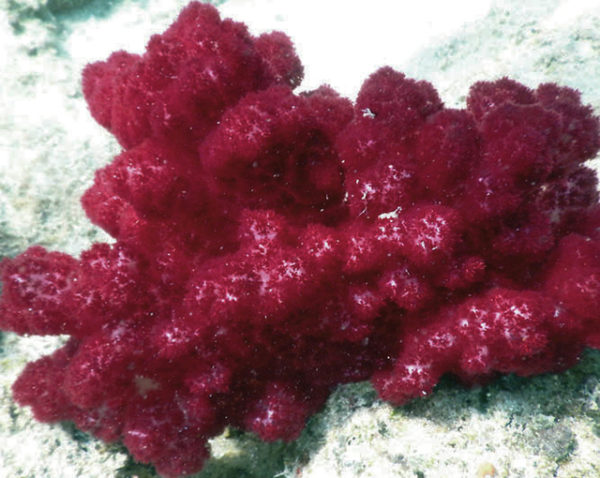Published in the Ocean Watch column, Honolulu Star-Advertiser © Susan Scott
October 22, 2016
Orpheus Island National Park, Australia >> When a local sailor heard we were sailing to the Palm Island Group, he kindly fetched his cruising guide to show us the best places to go. The anchoring spots were fairly straightforward, but he added a gem. “There’s a channel between Orpheus and Fantome Islands that has a strong current always running the same direction. It’s a good place to take the dinghy for a drift snorkel.”
A good place? It was snorkeling heaven. As our 2-horsepower outboard slowly carried us up-current in our rubber dinghy, we donned masks and fins, ready to jump off the boat as soon as the motor stopped. “How does one check for salties?” I said to Craig, remembering last week’s advice to keep an eye out. Orpheus Island’s park sign also posted a crocodile warning.
 This soft coral contains no symbiotic algae to help feed it, as other corals do.
This soft coral contains no symbiotic algae to help feed it, as other corals do.
The red polyps catch and eat animal plankton adrift in the current.
©2016 Susan Scott
“You go in first and look,” Craig joked.
Hands on our masks, we backflipped into the water and instantly forgot about crocs. The flow, going about 3 mph, sent us zipping down-current, an exhilarating sensation that felt like flying. More exhilarating, though, was the sight 5 feet below: a strip of soft coral bushes so red and fluffy it made me feel like shouting, “Thank you! I love you!” The highway-wide gap separating the islands has exactly what this soft coral species loves: a stretch of sparsely populated (with coral) water with swift, plankton-rich current.
How the tiny drifting larvae got anchored in the white sand to start their eye-popping colonies is a mystery of the marine world.
The current was so strong I could not get a good look at the exquisite red corals, but that’s the beauty of pictures — if you can get close enough and hold the camera still. Kicking as hard as possible, I could stay over a red bush for only about one second before losing ground.
Craig saw me struggling and pushed me forward, no small favor given that he was towing the dinghy. The brief boost allowed me to get off a few snaps. Seawater and visible white needles of calcium carbonate support the clear flexible stems of this soft coral that also comes in pink, purple and yellow. It has no common name, but since its genus name, Dendronephthya, is so unfriendly and clumsy, I call it pompom coral.
The genus has several species, so similar that scientists can identify them only by examining the supporting calcium bits.
During our fourth pass over the crimson coral clusters, the current swept us over a slightly different spot, and we found another pompom garden we hadn’t seen before.
What a wonderful world.